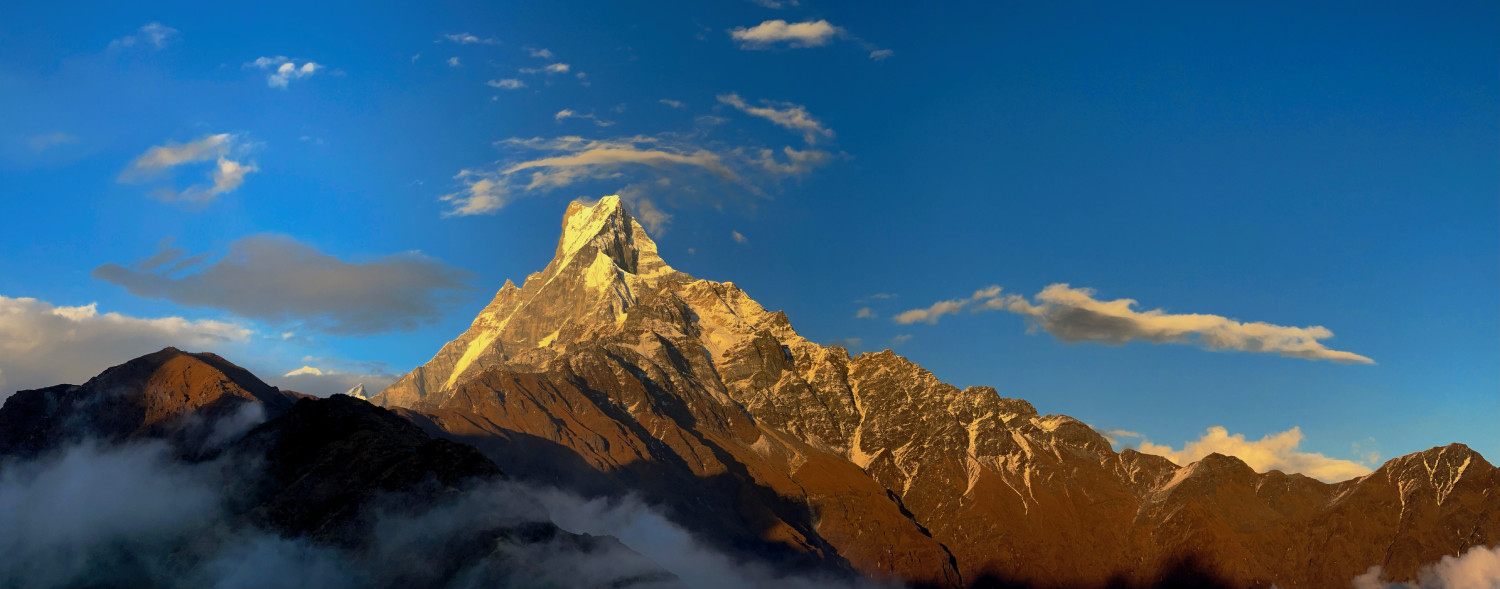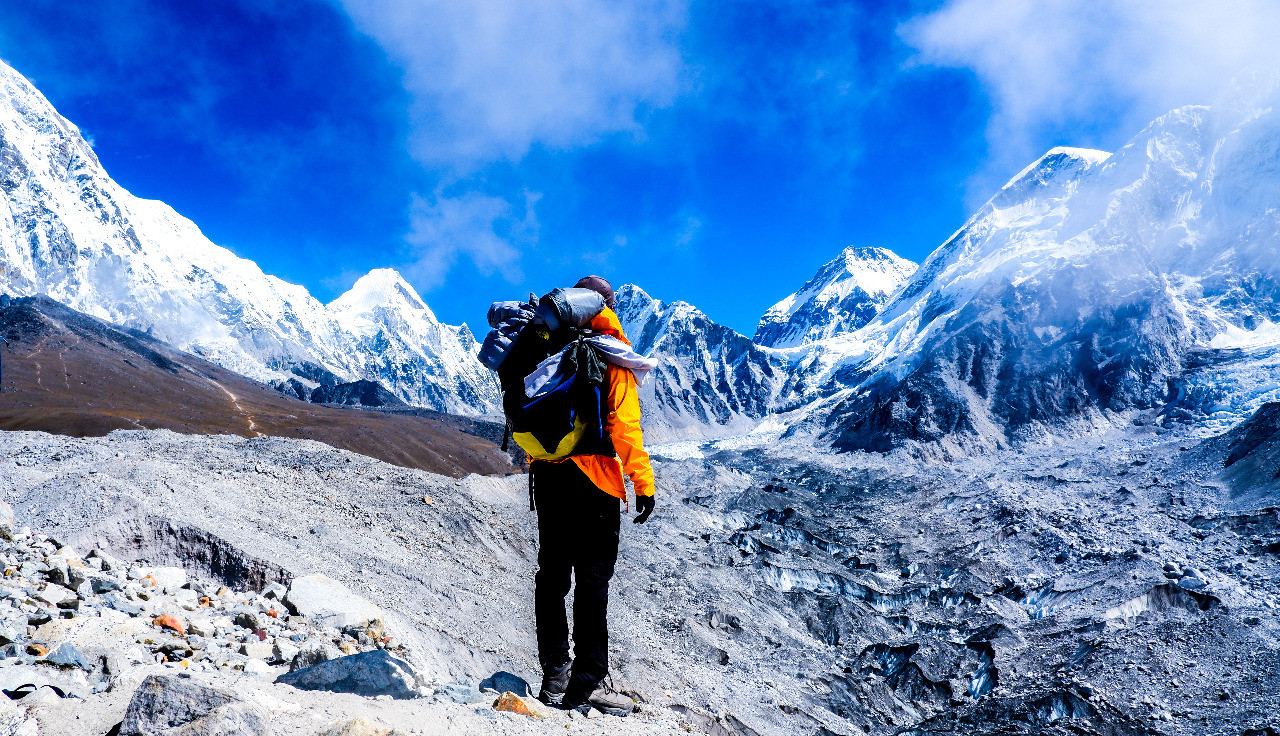Mount Everest – perhaps the only mountain known by everyone, sporty or nerdy, adventurous or prudent. Being the highest mountain above sea level on Earth, many mountaineers mark conquering the 8,848m on their bucket list, with some managed to make it, some sadly gave their lives away. The risk involved is a setback for most people who wish to enjoy the picturesque Everest scenery. But now, there is a moderate alternative for common folks – The Everest Base Camp Trek. Continue reading “Everest Base Camp Trek Facts and Information”
Annapurna Base Camp Trek Cost
Annapurna Base Camp is situated at an elevation of 4,130 meters (13,549 feet) above sea level on the northern side of Nepal, within the Annapurna region. Renowned among trekkers worldwide, it boasts a landscape cherished for its tranquility and offers breathtaking views of the Annapurna ranges. The surrounding hills and rivers further enhance the area’s natural beauty. The region is also home to a diverse array of wildlife, including tigers, snow leopards, oxen, and various species of deer, which add to its allure. Trekking in this area provides a unique opportunity to immerse oneself in the local culture of the Gurung and Magar people, who are the indigenous residents. Their warm hospitality and reverence for guests, embodied in the saying ‘Atithi Devo Bhava,’ meaning ‘the guest is God,’ ensure a memorable experience for visitors.”
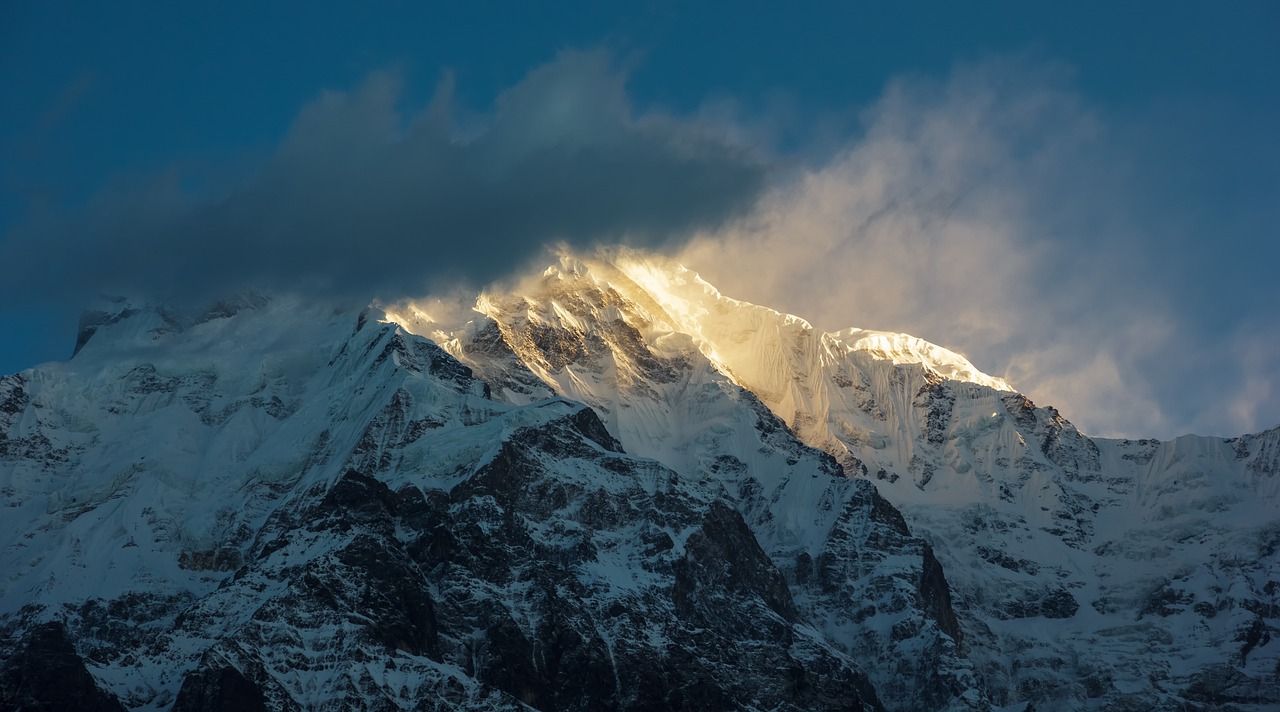
After learning about the wonders of the Annapurna region, you might be considering trekking here. When planning your trip, one of the first steps is researching the costs associated with the trek to ensure it aligns with your budget. Don’t fret; we’re here to guide you through the budgeting process and explain the various expenses you’ll encounter in Annapurna. From permits to accommodation and meals, there are several factors to consider when budgeting for your trek.
Transportation Cost
When planning a trek in the Annapurna region, one of the primary considerations is how to reach the area. Nepal has two international airports, with Tribhuvan International Airport being the preferred choice for most travelers. You can compare flight ticket prices from various online platforms such as Goibibo and MakeMyTrip to find the best deals for your journey to Nepal.
Upon arriving in Nepal, you’ll need to arrange transportation from the airport and book accommodation for your stay. Websites like TripAdvisor offer a wide range of options for booking hotels in Kathmandu, where you can rest after your flight. The following day, head to the bus park in Kathmandu to catch a sumo (shared taxi) to Pokhara. These sumos typically cost between 500 to 700 Nepalese rupees per person and provide a convenient and affordable means of travel. The journey from Kathmandu to Pokhara takes approximately 8 hours, offering picturesque views of the countryside along the way.
Upon arrival in Pokhara, take some time to rest or venture out to explore the enchanting Phewa Lake, especially in the evening when the scenery is particularly captivating. Many visitors enjoy soaking in the tranquil ambiance and observing the vibrant evening atmosphere of Pokhara.
From Pokhara, you can take a shared sumo to Jhinu Danda, which is a 4-hour ride. The fare typically ranges from 400 to 500 Nepali rupees. Your trek to Annapurna Base Camp will begin from Jhinu Danda, where you can embark on a journey through beautiful hills and trekking trails, ultimately enjoying the breathtaking views of the Annapurna range.
Accommodation
Accommodation during the trek is very important as you will need to trek in the Annapurna which is moderate still it takes some time and rest. Starting from Kathmandu you can book the room starting from Nprs.4000. You can book the hotel from the Trip Advisor or directly contacting them through their phone number or by emailing them.
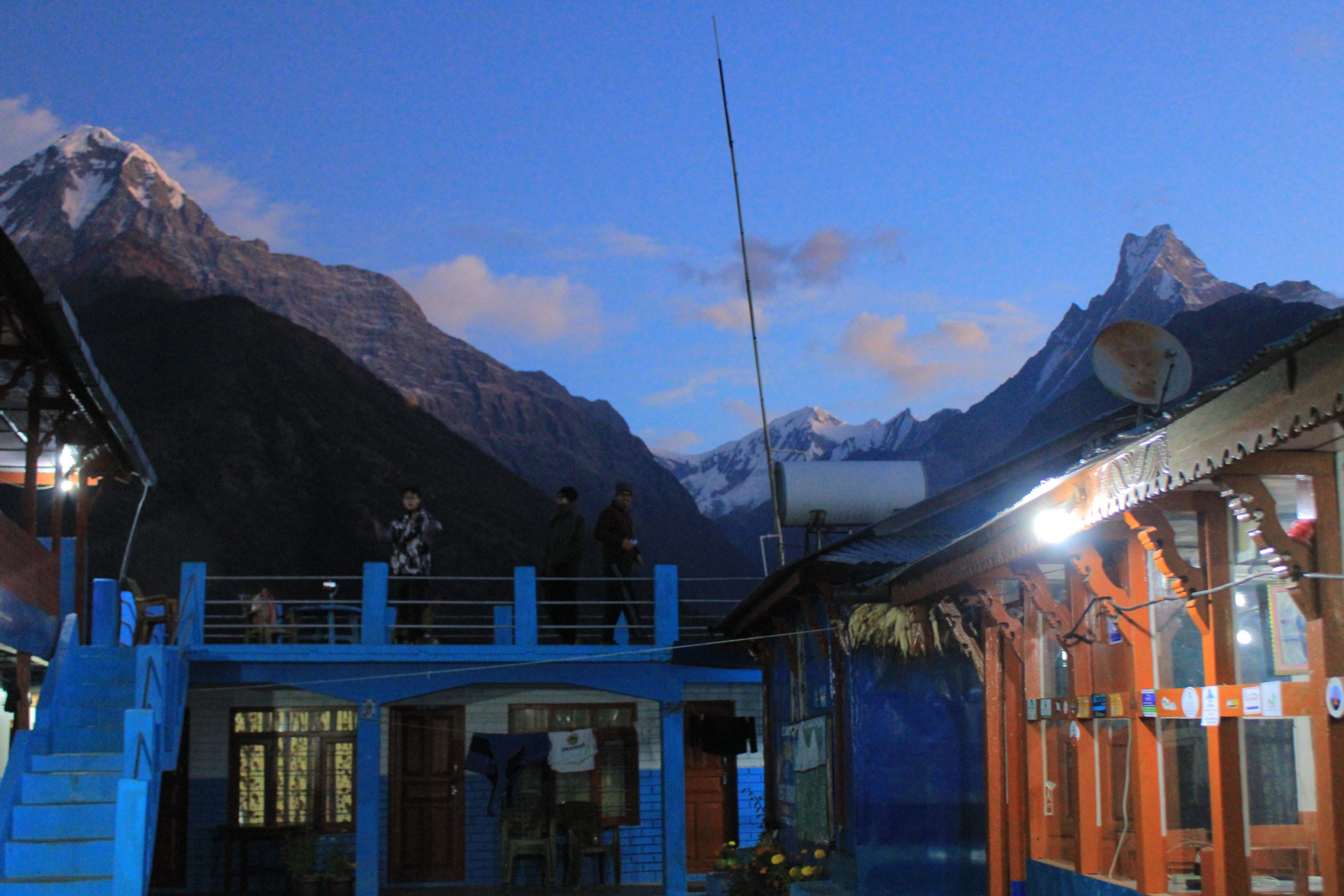
Pokhara and Kathmandu are the places where you will get luxurious rooms at lower prices. But during the trek, it will cost you a little high price as the tea house in the trekking area is situated on a remote site. The one-night price for a tea house in Annapurna can be Nprs. 5000 to 6000. It’s a little expensive right? but it will be value for money as the accommodations are in the base camp so from your room you can see the beautiful views of Annapurna region.
Guides and Porter
When trekking, having a porter is essential, especially as your belongings may be a little heavy. Many trekkers opt to hire a porter so they can focus solely on trekking without worrying about the weight of their belongings. Porters typically charge between $25 to $35 for their services. You can hire a porter at the beginning of the trek, either in Kimche or Nayapul. Upon reaching Kimche, you’ll find numerous porters awaiting guests, making it convenient to hire one for assistance.
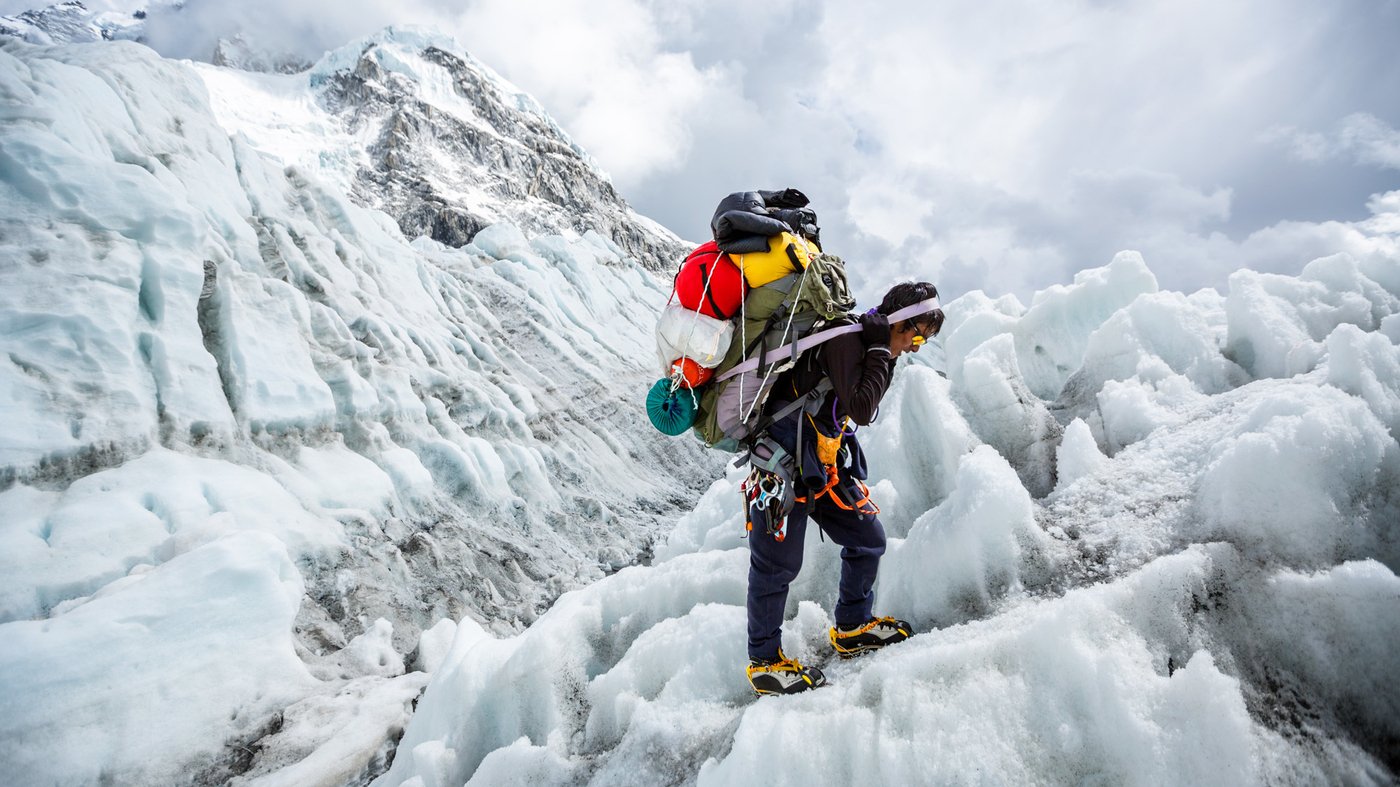
When you trek to Annapurna you will need a guide as well. You can trek alone as well but Google will not show you everything. You will need to explore the place you visit so it’s important to hire a guide cause a local guide knows everything in that region they can help you with everything and they will take you to the place which Google will not suggest. One tip is to always hire a guide who is local in that area so that you can explore everything in Annapurna. A local guide can cost you around 25$ to 35$ per day. You can hire them through many social media channels like Facebook, Instagram.
Permits and fees
Trekking in the Annapurna region requires obtaining trekking permits. There are two permits you must have: the Annapurna Conservation Area Project (ACAP) permit and the Trekker’s Information Management System (TIMS) permit. These permits are mandatory for entry into the protected area of Annapurna. You can obtain them online through the official website of Nepal or in person at offices in Kathmandu or Pokhara. The TIMS card costs $20, while the ACAP permit costs $30.
In total, your trekking fees will amount to approximately 50,000 to 60,000 Nepali rupees, depending on your itinerary and spending preferences. If you prefer not to handle the logistics yourself, our company offers guided tours that include permits, guides, and porters. You can book our Annapurna trekking tours through the following links:
For a 13-day trek: https://www.adventurevisiontreks.com/trip/annapurna-base-camp-trek
For a 7-day trek: https://www.adventurevisiontreks.com/trip/7-days-short-annapurna-base-camp-trek
Feel free to customize your itinerary according to your preferences, and we’ll assist you accordingly.
Mardi Himal Trek – How to Trek in 4 Days?
Mardi Himal is a popular peak among tourists and hikers because of its route. It is located at a height of 4,500 meters in Nepal’s Annapurna region, which is well-known for its varied landscape, natural beauty, and mountain views. You may see the breath-taking Machhapuchhre Himal, also known as the “fishtail,” as well as the Annapurna South, I, II, Dhaulagiri, Mardi Himal, and the expansive Annapurna region on this walk.
Mardi Himal Trek is a four-day, three-night hiking adventure. This trek’s journey can be completed in accordance with the number of days required. The four-day, three-night Mardi Himal Trek begins and ends in Pokhara, where hikers will drive from the picturesque city of Pokhara to Khhada. The walk begins at Khadda and passes via an Australian camp, the picturesque villages of Pothana and Pittam Deurali, as well as other charming villages. Trekkers will take a quick break for lunch at Pittama Deurali. Following lunch, the hiking resumes through the hilly region’s dense forest.
The first day of the walk only consists of the fairly difficult forest trekking. You may experience the subtropical forests on this trip, which are home to a wide variety of plants like fir, birch, oak, and rhododendron, among others. The sound of the wind and birds chirping can be heard as you stroll through the stunning Mardi Himal trek . We will arrive at our lodging, or lodge, after our strenuous trekking, where we will spend the night. In the 2600-meter-high forest camp, encircled by wide forests. where hikers will eat dinner and get enough sleep.
Following a hearty and nutritious breakfast, the journey resumes after a restful night. Compared to the first day of the trek, the second day is somewhat more adventurous. Trekkers will pass the forest camp, the rescue camp, and finally the low camp on the second day. From there, they can view the magnificent Machhapuchhre.
The trek reports that the ascent from the forest camp to the low camp (3000m) took two hours. Some people eat lunch at Low Camp after a satisfying stroll, while others go to Badal Dada, which is 2 and half hours away from Low Camp. It’s the rhododendron forest that you’ll see as you pass the low camp. It usually blossoms in March, beginning in late February and continuing through early April.
Following that, you will arrive at Badal Daada, where you will encounter a distinct topography of the hike, with bear-infested mountains and sparse vegetation such as moss and shrubs. The trek will be somewhat challenging, and there will be amazing vistas of the surroundings everywhere. Your level of joy and happiness will vary with each inhalation and stroll. Hiking through the apex of desolate hills surrounded by tiny, bushy plants and the Himalayas will bring you to High Camp, which is 3,550 meters above sea level. Following the thrilling hike, the trail ends for a day at the High Camp.
The trekkers will leave their accommodations early on the third day, at 3:30 am, following a good night’s sleep at high camp. You will be mesmerized by the starry sky and full moon that lead you as you travel to Mardi Himal viewpoint to see the early sunrise. Every year, thousands of tourists and locals alike flock to the Mardi Himal View Point to witness the captivating sunrise, the clouds flying beneath you, and the earliest rays of sunlight falling on the Himalayas, creating a vibrant golden orange hue. You can carry on hiking for an additional 1:30 hours to reach the Mardi Himal Base Camp. You can return to high camp after finishing the Mardi Himal Base Camp Trek, where you may have breakfast and lead your journey ahead to the siding . The low camp divided the way to the siding. You have an alternative route to return to the siding. You will encounter a variety of weather conditions along the route, including fog and cold. We will arrive at our destination siding after a strenuous day of trekking. where a lot of hikers and tourists relax and eat at your lodges.
Following a restful night and breakfast the following day, the trekkers begin their return journey to Pokhara. Following a quick stroll, you come to leave the siding by reserving a private or shared jeep.
Frequently Ask Question
Why to go Mardi Himal Trek?
This short hike encompasses the entire splendor of the natural world, including Mt. Annapurna, Machhapuchhre, Dhaulagiri, Mardi, and other peaks.
How difficult is the trek?
It’s a moderately challenging trek. The walk there takes 4 to 5 days, and it’s at a height of 4,500 meters.
What is the best time for the treks?
Mid-September to mid-December is the ideal period to trek the Mardi Himal.
Can I hire a trekking guide according to my language?
To learn more about the culture and mountains of Nepal, you can hire a guide in your native tongue, such as Spanish, Chinese, English, Hindi, etc.
Are there any age requirements for the trek?
It is advised that you consider your options before embarking on any treks if you have any health issues or problems, such as asthma. Being under 60 years old is preferable if you want to enjoy the walk and not experience any discomfort.
Is there any digital payment available during the treks?
No digital payment option is available, so be sure to bring Nepali rupees to cover the cost of the meal and services.
What should I carry during the treks?
It is essential to have your hiking bag with the items on the following list.
Toiletries and medicine
- Sunscreen
- Face and body moisturizer
- Lip Guard
- Toothpaste and toothbrush
- A lightweight towel
- Portable shampoo
- First aid kit with medicine (for altitude sickness, cold, sprains)
- Wet wipes
Clothing
- Base layer
- Outer layer
- Outermost layer
- A pair of hiking trousers
- A pair of hiking shorts
- Polyester trekking t-shirt
- Waterproof jacket and trousers
- 4 pairs of underwear
- 4 pairs of sports bras for women
Headwear
- Cap
- Wollen hat
Gloves
- Inner gloves
- Outer gloves
Footwear
- Hiking boots
- Trekking boots
- 4 pairs of hiking socks
- 4 pairs of thermal socks
- A pair of slippers or sandals
Daily Itinerary
Day 1: Drive from Pokhara to Khande and trek to the forest camp.
- Pokhara-khande-forest camp(2600)
- 1hrs Drive from Pokhara-khande
- Hiking distance 14.1 km
- Estimated time duration 9 hrs
You will commence our trek by traveling to Khande from the beautiful city of Pokhara. The trail begins at the Khande and ends with a day-long forest camp stay. This trail passes through the picturesque villages of Pittam Deurali and Pothana. This trail mostly goes through forests.
Day 2: Forest camp to High camp
- Forest camp-Rescue camp-Badal Danda-High Camp(2600m-3550m)
- Hiking distance:
- Estimated time: 7hrs
The second day we will eat breakfast at the forest camp and start walking from the forest camp to the high camp. We will stop for lunch at the low camp or else Badal daada. There are captivating vistas of the Machhapuchhre from all around you. Low Camp will take two hours to get there from Forest Camp, and Badal Daada will take an additional two hours. The walk from Badal Daada to High Camp takes three to four hours, depending on your pace. If you hike well, you can finish the trek in a shorter amount of time.
Day 3: High camp –Viewpoint –Siding
- High camp –mardi himal viewpoint –siding (3550-4200-4500m)
- Hiking distance: 29.3km
- Estimated time: 9hrs
You will leave our accommodations at 4:00 am to see the sunrise at Mardi Himal View Point. From there, we will travel to Mardi Himal Base Camp. Once there, we will return to High Camp, eat breakfast, and then continue on our way to Siding, stopping along the way for lunch at Low Camp.
Day 4: siding to Pokhara
- Siding –Pokhara
- Estimated: 25 min of hike then 2hrs of drive
You’ll resume you trek with a quick 20-minute walk after getting a good night’s sleep. then leave in a jeep that you can reserve privately or share.
Tags: Mardi Himal Base Camp Trek, Mardi Himal Trek
Short Everest Base camp Trek – A Complete Guide with Itinerary
Short Ebc (Everest base camp) trek is the most incredible experience that takes you through the base camp of Everest in less than 12 days, with luxurious comfort and style. When you walk through the trekking it will provide you natural pleasure, Buddhist priory, & high altitude flora and fauna. While on returning Heli flights back to Kathmandu, trekker’s get to explore spellbinding scenarios of the Sagarmatha and the other peaks in the span of enjoyment of the trek through the fascinating Sherpa hamlets & experiencing spectacular aerial view of the Everest region. Short Ebc trek is the most thrilling & adventurous trek.
There’s no fear during the short Everest base camp trek with us. You’ll completely feel safe & comfortable because of the loving, caring, respectful, and kindful nature of the people during this trek. People are really very friendly and welcoming. So it is completely safe for the women whether you are trekking alone or you’re trekking with the team. Yes you’ll get the attention of the local people because you are a foreigner & your gender but still there is nothing to worry about, it is completely safe to travel or trek.
Guide is the backbone of the trekking world. Guide helps you throughout every step of the trek, because they have good knowledge about the geography regarding the trek & high altitude. Yes, you can hire a guide from Kathmandu. You also can also hire a guide from Kathmandu and also from the Lukla. It’s totally up to you. Hiring a guide from Kathmandu will make you feel more comfortable and you’ll enjoy the company of the guide from Kathmandu. If speaking English is your problem then you can also guide according to your mother tongue. We have German, French, Spanish, Chinese speaking guides as well.
There will be no communication barrier between you and the guide because there will be the best guide with good communication skills.
What type of cuisine is available during the short Ebc trek?
In the tea house, traditional Nepalese cuisine is served, with lots of noodles & rice. Nevertheless, most of the tea houses also offer a range on their menus, such as pizza, lasagna, burger, chips, apple pie and even a buff curry with rice. Hot and cold drinks including beer are also served according to your order but it may not be good when you’re in high altitude. It is also better to eat something hot and light. If you overeat you will have problems while walking with a heavy stomach. From starters, main course and dessert you will get everything in the food menu. You’ll get continental breakfast up to $2 to $7 and Nepali cuisine food up to $10 to $12.
How much weight is carried by the porter in the short Ebc trek?
During the short Ebc trek, one porter will help 2 clients. We prosecute the weight limits of the maximum 20kg/44lbs to 25kg per porter. So, we suggest you carry only essential trekking equipment & it should be 15kg/33lbs, not more than that. Also, the domestic flights in Nepal only grant 15kg/33lbs by putting both luggage & backpack together. And you can store the remaining luggage in the hotel of Kathmandu which will be managed by your agent.
Pinpoints of short Everest base camp trek.
- Mesmerizing sun setting over Everest from Kala Pattar, this is basically known as Everest view point
- Peaceful environment, with the fabulous scenery of the mountain covered with snow
- Climate & temperature are cold in this place.
- Tibetan snowcock, musk deer, red panda, mountain yak, & golden
Which season is suitable for short Ebc trekking?
Everest Base camp trek can be performed through out the year. But rainy season is not suggested. Spring and Autumn are best time to trek.
Spring season (early March to late July)
During this period, the temperature and climate begins warmer. You’ll see greenery all over the hills. Flowers tend to blossom and everything seems even more beautiful and better. The day will be longer and warmer in the march & it will be still cold in the morning & at nights. You’ll get a chance to see rhododendron (Nepal’s national flower) blossoming all over the hills. Since it is the perfect time for trekking it can be quite busy & you’ll experience many visitors in the himalayan region.
Autumn season (September to early November)
This is the season where the day will be warm & clean, the temperature falls off slightly cold. It will be an incredible journey when you trek in this season. There will be no risk of snowfall, rainfall and there will be no leeches as well. In this season, mountains will be more noticeable.
Climate and temperature
| no. | Seasons | Day time | Night time |
| 1. | Winter | -18⁰c to 16⁰c | -5⁰c to 12⁰c |
| 2. | Summer | -10⁰c to 8⁰c | 07⁰c to 15⁰c |
| 3 | Spring | 2⁰c to 16⁰c | -12⁰c to 02⁰c |
| 3. | Autumn | -12⁰c to 16⁰c | 02⁰c to 5⁰c |
Detail itinerary
Day 01: Arrivals in Kathmandu, welcome dinner. O/n at hotel/ trek preparation
Welcome to Nepal. Our representative will pick up from the Tribhuvan international airport. And then at the hotel, freshen up & take some rest. In the evening, enjoy a welcome dinner organized by Adventure Vision Treks.
Day 02: Fly to Lukla (2800m) & trek to Phakding (2650m)
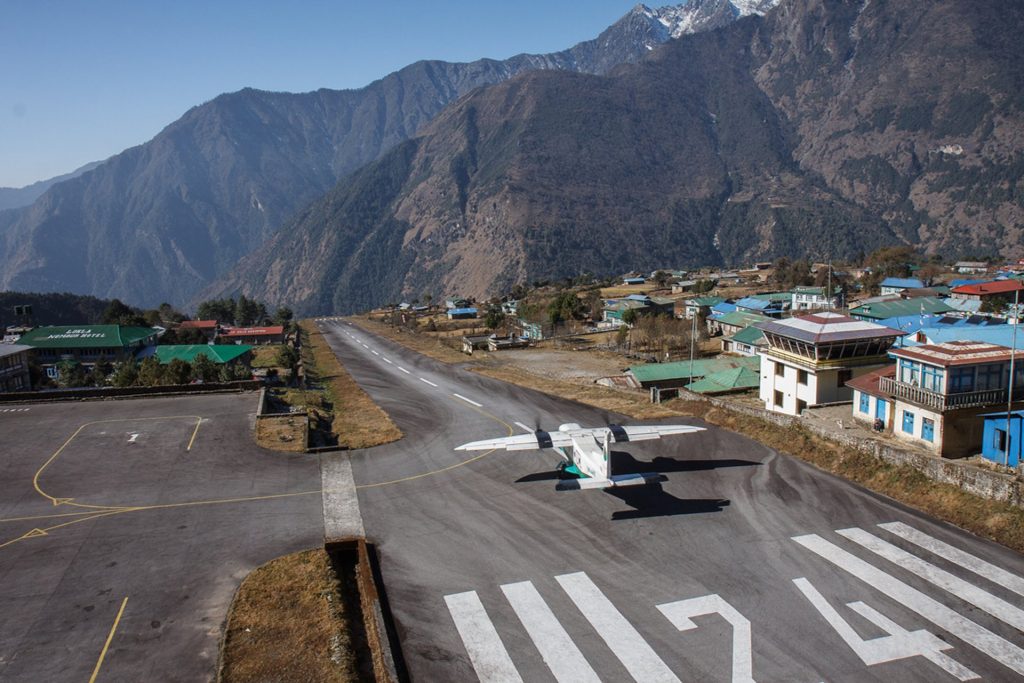
Early in the morning drive to Manthali (4 hours) takes Manthali to Lukla flight. A day starts with an early morning flight with a drive to Tribhuvan international airport in Kathmandu. We will catch a short Tran- himalayan flight to Tenzing Hillary airport at Lukla (2804m). At Lukla, our trekking guide will brief you & introduce you to the porter before starting the trek towards Phakding (2,610m).
We walk on a trail that slowly drops down to Chepling village from where we get the glimpse of the mountain Khumbila, a sacred mountain that has been climbed. And then we descend further down until Phakding.
Day 03: trek to Namche (3440m)
On the third day we continue trekking along the banks of the river called Dudh Koshi & cross the river several times through suspension bridges loaned with prayer flags. We cross Chumao & Monjo villages before reaching the entrance points of Sagarmatha national park. Then after, we cross suspension, bridge & we will walk across Jorsale village and walk alongside the Dudh Koshi & Bhote Koshi. A steep climb through the forested trail leads us towards the Namche Bazaar.
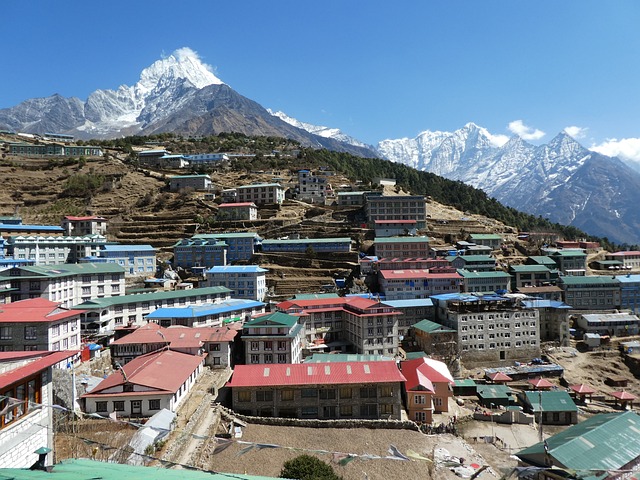
Day 04: Acclimation rest day
This will be the first scheduled acclimatization day on our treks. Mountain experts will suggest you to stay active throughout the day; we climb high and sleep low. We spend our day in Namche Bazaar in order to acclimatize & adjust our body in this atmosphere.
After having breakfast, we hike to Syangboche Airstrip that is wonderfully located on a hill above the town. From here, we get to witness the striking view of Namche & tempting Himalayan ranges as well. Further, we hike to the Everest view hotel. It is the highest located hotel in the world & served the best view of Everest and other peaks right in front of the table. We trek back to Namche, visit Everest photo gallery & the Sherpa cultural museum.
Day 05: trek to Thyangboche
After having breakfast, we take an easy trail from Namche which leads us to the wide valley called Dudh Koshi valley at the village of Phungki Tharka. Here we get the great views of Mountain Everest. We then walk along the right side of the river called Dudh Koshi River until Tengboche. The trail from Namche to Tengboche offers the impressive beauty of nature. Trekker gets to see mesmerizing view of the rivers, hills & peaks.
Tengboche village is nestled at the juncture of the Dudh Koshi and the Imja khola (river). It is surrounded by incredible hills covered with the stunning flower rhododendron forest. The village houses Tengboche monastery, the largest monastery in the Khumbu region.
Day 06: trek to Dingboche
Today we will cross the Imja River via a suspension bridge & walk towards the beautiful village of the dingboche. We drop off & walk throughout the rich forest of birch, conifer and rhododendron treks. On the way, we get the stunning views of Mt.Everest, Mt.Lhotse & Ama Dablam. We will walk along Lobuche River & Imja valley before making the ascent to dingboche.
Day 07: Rest day at Dingboche (4360m)
We will spend a day in dingboche which helps our body to acclimatize at higher altitude. Today we climbed on a ridge located behind the village & witnessed the amazing views of 8 thou sanders including Lhotse, Makalu & Cho Oyu. In addition, we also get to admire the cholaste & taboche peaks. And to the north-east, we can see the peaks standing above the Khumbu khola valley. We will also see the picture of dingboche village & wide Imja khola valley from another point of the ridge.
Day 08: Trek to Lobuche (4930m)
After having breakfast, we’ll continue our trek to Lobuche via Dhunga. We’ll walk across the trekkers Aid post located at Pheride (4210m). The post is operated by the western volunteer doctors & assisted by the himalayan rescue association. We also walk across Chupki Lhara, a rock- strewn slanting from where attractive mountain vistas can be seen here. The chain follows the Khumbu glacier hill with exceptional views of the mountain peaks like Khumbutse, the mahalangur Himal, Lingtren & the pumori. Mount Nupste looms up ahead once the glacier pass is crossed. And overnight in Lobuche.
Day 09: Trek to gorak shep (5288m) excursion to Everest Base Camp (5545m)
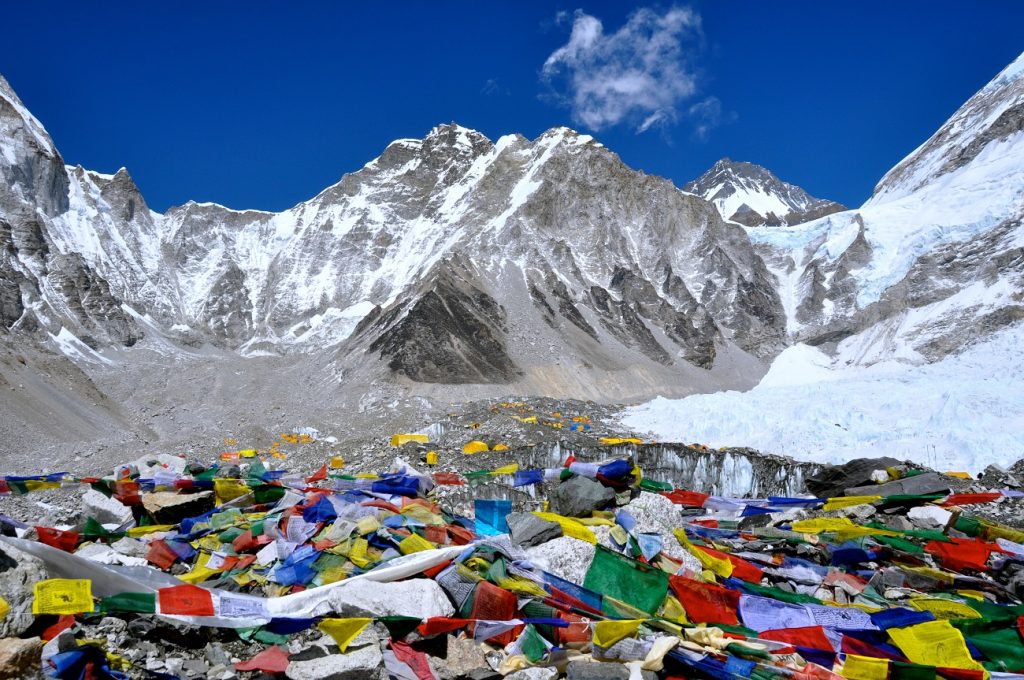 The chain to Everest base camp is not so difficult. Nevertheless, we have ascended & descended quite often on a glacier footpath. We also walk on rough land. As we reach the base camp, we admire the amazing melt patterns and enjoy the round view of ice giants on the upper reaches of Khumbu glaciers. Mt. Everest Base Camp serves the outstanding views of Nupste, Khumbutse, & Pumori mountains. After exploration, we retrace our steps back to gorak shep to stay overnight.
The chain to Everest base camp is not so difficult. Nevertheless, we have ascended & descended quite often on a glacier footpath. We also walk on rough land. As we reach the base camp, we admire the amazing melt patterns and enjoy the round view of ice giants on the upper reaches of Khumbu glaciers. Mt. Everest Base Camp serves the outstanding views of Nupste, Khumbutse, & Pumori mountains. After exploration, we retrace our steps back to gorak shep to stay overnight.
Day 10: Climb Kalapattar- Gorak Shep & Kathmandu by Helicopter.
It is another significant day of the trek. Today we will be hiking early in the morning to witness mesmerizing sunrise views from Kala patthar (5545m). It is the most famous viewpoint in Nepal. After that, we trek back to Gorak Shep. After having breakfast, we will enjoy a comfy helicopter ride to return back to Kathmandu. You’ll also experience spellbinding aerial views of the wonderful topography as well as the huge himalayan range. Overnight in Kathmandu.
Day 11: Trip ends
At the assigned time we’ll drop you to the airport. Our team is delighted to serve you any means. Your journey in Nepal comes to an end today. Our airport representative will transfer you to the Tribhuvan international Airport for your final departure. Goodbye & May we meet again & we are glad to be part of your journey.
Tags: Everest, everest base camp trek, short everest base trekBest Places To Visit In Nepal
Nepal’s top ten places guarantee a once-in-a-lifetime vacation, combining cultural richness, natural beauty, and adventurous activities. Nepal has something to offer any tourist, whether they are looking for spiritual enlightenment, flora and wildlife encounters, or hiking challenges. Begin your journey to nirvana and let the allure of Nepal leave an unforgettable impact on your soul.
Kathmandu Valley: A Cultural Odyssey
Kathmandu valley is the capital city of Nepal. Encompassing the three historic cities of Kathmandu, Bhaktapur, and Patan, this valley is a captivating blend of architectural marvels, colorful traditions, and non secular sanctuaries. Kathmandu, the capital metropolis, serves as the thrashing heart of the valley, where the bustling streets of Thamel coexist harmoniously with UNESCO World Heritage Sites like Durbar Square and the sacred Pashupatinath Temple. The valley’s precise charm lies in its ability to seamlessly weave the past into the present, permitting travelers to walk through narrow alleys decorated with intricately carved buildings and find out hidden courtyards that whisper tales of centuries long past by. Exploring the Kathmandu Valley is a cultural odyssey that unveils the diverse tapestry of Nepal’s records and artistry. Bhaktapur, with its properly-preserved medieval structure and Bhaktapur Durbar Square, transports traffic lower back in time, providing a glimpse into the metropolis’s royal beyond.
How To Reach Annapurna Base Camp?
Annapurna Base Camp (ABC) trek is a famous trekking destination in Nepal, giving breathtaking views of the Annapurna Himalaya, a diversified landscape of forests, towns, rivers, and hot springs, and a rich cultural experience with the Gurung people. But how do you get to this incredible location? In this article, I will discuss the several routes to Annapurna Base Camp, the benefits and drawbacks of each, and some advice to make your journey more pleasurable and safe.
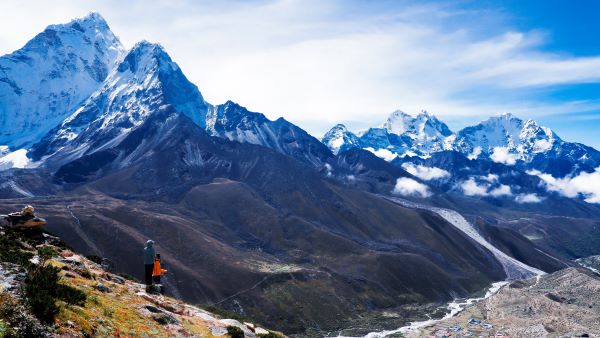
Recommended Read: Best Time To Visit Annapurna Base Camp
Option 1: Trekking from Pokhara
The most common and budget-friendly way to reach Annapurna Base Camp is by trekking from Pokhara, the gateway to the Annapurna region. Pokhara is a beautiful lakeside city that offers many attractions and activities for travelers, such as boating, paragliding, bungee jumping, and visiting temples and museums. You can easily get to Pokhara from Kathmandu by bus, flight, or private car.
From Pokhara, you have several options to start your trek to ABC. The most direct route goes through Australian Camp, Ghandruk, Chomrong, Himalaya Hotel, and Machapuchare Base Camp. This route takes about 7 days to complete, depending on your pace and acclimatization. You can also extend your trek by combining it with other routes in the Annapurna region, such as Poon Hill, Mardi Himal, or Annapurna Circuit.
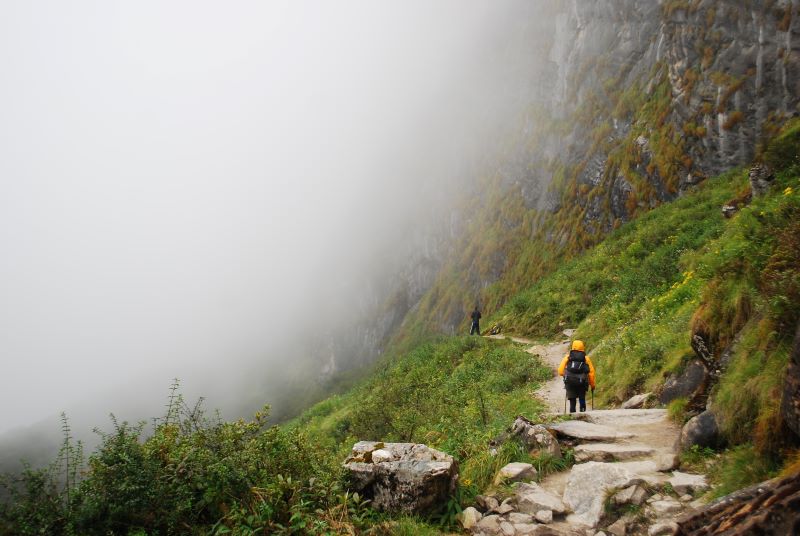
Recommended Read: Top 10 Places to Visit in Annapurna Base Camp
The main advantages of trekking from Pokhara are:
- Along the route, you can take in the scenic splendor and cultural richness of the Annapurna region.
- There are numerous trekking itineraries to suit your preferences and skills.
- You can stay in cozy guest houses (also known as tea houses) that offer basic amenities including beds, blankets, toilets, baths, and food.
- You may help the local economy while also interacting with the lovely inhabitants.
The following are the primary disadvantages of trekking from Pokhara:
- Two permissions are required: the TIMS card (NPR 2000/US$17) and the Annapurna Sanctuary Permit (NPR 3000/US$25).
- You must bring your own backpack or hire a porter or guide to assist you with your gear.
- You must be physically and psychologically fit to face the obstacles.
- You must be cautious of the dangers of altitude sickness, changing weather, landslides, and animal assaults.
Option 2: Helicopter Flight from Kathmandu or Pokhara
If you are short on time or prefer not to trek, you can take a helicopter journey to Annapurna Base Camp. This is a pricey yet exciting way to get to ABC in a matter of hours. By chartering a helicopter, you may fly directly from Kathmandu or Pokhara to ABC. The helicopter will take you over the spectacular Himalayan terrain before landing at ABC for roughly 15 minutes. Before flying back, you can take in the panoramic views of the Alps and take some shots.
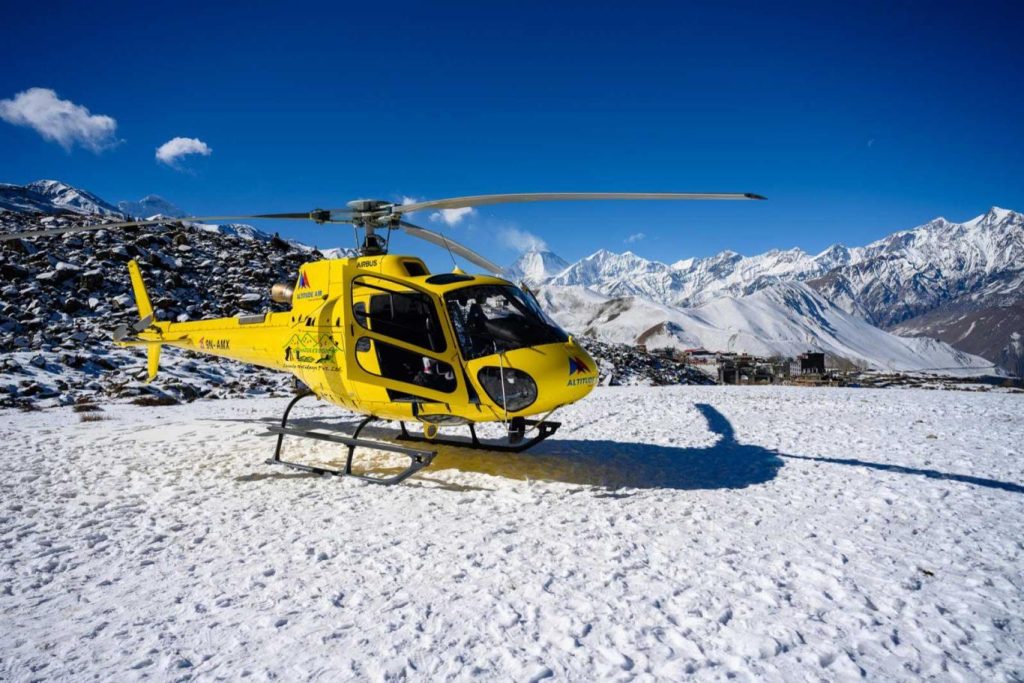
Recommended Read: Annapurna Base Camp Trek Distance
The main advantages of flying by helicopter are:
- You can save time and energy by skipping the long and strenuous trek.
- You can experience the thrill of flying over the world’s highest peaks.
- You can avoid the crowds and enjoy the solitude of ABC.
The main disadvantages of flying by helicopter are:
- You need to pay a hefty price for the flight. The cost ranges from US$500 to US$2000 per person, depending on the number of passengers and the season.
- You need to book your flight in advance and be flexible with your schedule. The flight is subject to weather conditions and availability.
- You need to be prepared for possible altitude sickness. The sudden change in elevation can cause headaches, nausea, dizziness, and shortness of breath.
Recommended Read: Annapurna Base Camp Trek Cost
Tips for Reaching Annapurna Base Camp
Whichever option you choose to reach Annapurna Base Camp, here are some tips to make your trip more enjoyable and safe:
- Plan your vacation ahead of time. Investigate the best time to visit ABC, reserve your accommodations and transportation in advance, pack your essentials, and obtain travel insurance.
- Respect the culture and environment of your surroundings.
- Follow the Annapurna Sanctuary National Park’s rules and regulations, dress modestly, ask permission before photographing people or locations, don’t litter or make noise, and don’t hurt any plants or animals.
- Drink plenty of water and eat healthy. Drink plenty of water and stay away from alcohol and coffee. Consume a well-balanced diet rich in carbohydrates, proteins, and fats. Drink only boiling or purified water and avoid eating raw or uncooked foods.
- Take it easy and pay attention to your body. Don’t push yourself too far or too quickly. Take regular pauses and Take some time to relax. If you have any altitude sickness symptoms, descend immediately and get medical attention.
Trekking In Annapurna Base Camp Trek is a dream destination for many travelers who want to witness the beauty and majesty of the Himalayas. There are different ways to reach ABC, each with its own pros and cons. You can choose the option that suits your budget, time, and adventure level. No matter how you get there, you will surely have an unforgettable experience that will stay with you for a lifetime.
Why Annapurna Base Camp Trek Should Be On Your Bucket List?
Annapurna Base Camp trek is a famous trekking route in Nepal that offers breathtaking views of the Annapurna range. The trek starts from the beautiful lakeside city of Pokhara and passes through charming villages, lush forests, and terraced fields before reaching the base camp. The trail takes you along the Modi Khola river, through rhododendron forests, and over suspension bridges with stunning views of the Himalayas. Along the way, you’ll pass through various villages, including Ghandruk, which is home to the Gurung community, known for their bravery and hospitality. Reaching the base camp is a surreal experience with the massive Annapurna I towering in front of you. The view of the snow-capped mountains and glaciers is truly awe-inspiring. The trek can take anywhere from 11 to 13 days depending on the route and pace, and it’s recommended for people with a moderate level of fitness and some trekking experience. The Annapurna Base Camp trek is a must-do for anyone visiting Nepal and looking to experience the beauty of the Himalayas.
Here are some reasons why the Annapurna Base Camp trek should be on your bucket list:
1. Breathtaking Mountain Scenery
The Annapurna mountain range is one of the most iconic and beautiful in the world. The trek offers unparalleled views of snow capped peaks, including Annapurna South, Annapurna I, Machhapuchhre (Fishtail), Hiunchuli, and many more. The scenery
changes dramatically as you ascend higher, and the beauty of the mountains will leave you spellbound.
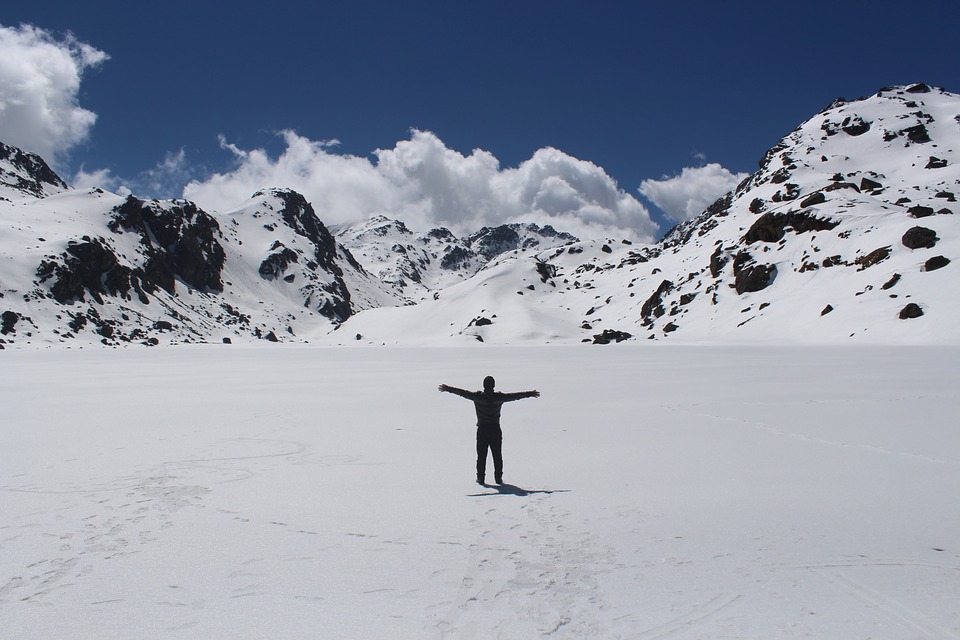
2. Cultural Immersion
The trek takes you through diverse landscapes, from lush forests to alpine meadows, and from small villages to high mountain passes. Along the way, you will have the opportunity to interact with the local people and learn about their culture and way of life. The trek
passes through several Gurung and Magar villages, where you can experience their unique customs, traditions, and cuisine.
3. Challenging Yet Accessible
The Annapurna Base Camp trek is challenging but also accessible to most people with a moderate level of fitness. The trek involves several steep ascents and descents, but the pace is relatively relaxed, allowing you to acclimatize to the altitude gradually. The trek takes
around 7-12 days, depending on your itinerary and fitness level, and you can choose to do it independently or with a guide.
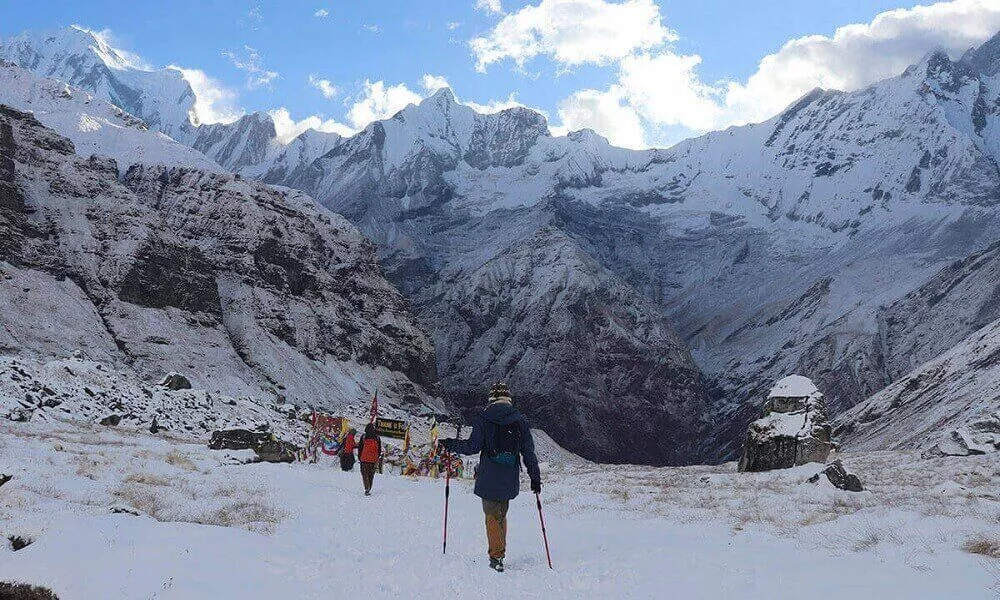
4. Varied Trail Experience
The trail to Annapurna Base Camp is varied and diverse, with a mix of easy and challenging sections. You will trek through beautiful rhododendron forests, cross suspension bridges over raging rivers, hike through rocky terrain, and climb steep stairs to reach the base camp. The trek also includes a visit to the famous hot springs at Jhinu
Danda, where you can relax and rejuvenate your tired muscles.
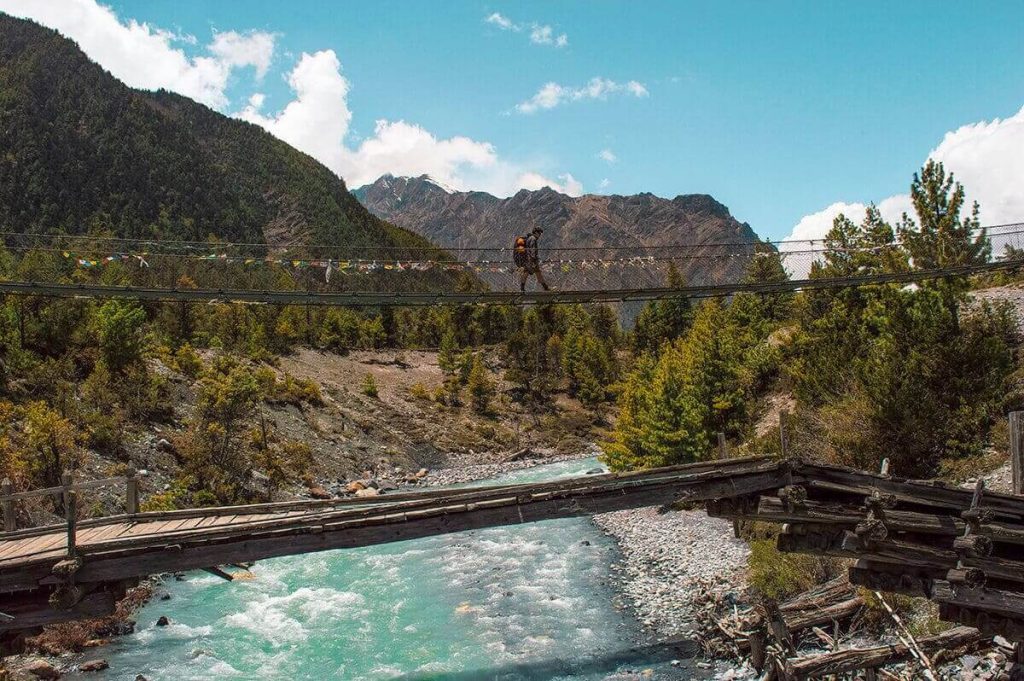
5. An Unforgettable Experience
The Annapurna Base Camp trek is an unforgettable experience that will stay with you for a lifetime. The trek offers a chance to disconnect from the hustle and bustle of daily life, to immerse yourself in nature and connect with yourself on a deeper level. The stunning scenery, the rich cultural experience, and the sense of achievement at reaching the base camp make this trek one of the most rewarding experiences you can have.
6. Ethical and Sustainable Tourism
The Annapurna Base Camp trek also offers an opportunity to practice ethical and sustainable tourism. Many trekking companies and lodges along the trail are committed to reducing their environmental impact and supporting the local community. You can choose to stay in eco-friendly lodges that use renewable energy sources, avoid plastic waste, and serve locally sourced food. Supporting such responsible tourism practices can help preserve the natural beauty of the Annapurna region and ensure that the local community benefits from tourism.
7. Flexibility in Itinerary
The Annapurna Base Camp trek also offers flexibility in terms of itinerary. You can choose to take different routes depending on your preference, fitness level, and time available. The trek can also be combined with other popular destinations in Nepal, such as the Poon Hill trek, the Ghorepani trek, or a visit to the historic city of Pokhara. You can tailor your itinerary to suit your interests and budget and create a personalized experience that suits you.
8. Affordable Adventure
Compared to other popular trekking destinations such as Everest Base Camp, the Annapurna Base Camp trek is relatively affordable. The cost of the trek depends on several factors such as the length of the trek, the level of comfort you prefer, and whether you hire a guide or not. However, even with a limited budget, you can still enjoy a fulfilling trekking experience that offers excellent value for money.
9. Safe Trekking Environment
The Annapurna Base Camp trek is also considered a safe trekking environment. The trail is well-marked, and there are several lodges and tea houses along the way that offer accommodation and food. The region is also accessible by road, and there are several rescue teams available in case of emergencies. However, it is still recommended to trek with a licensed guide who can provide support, information, and assistance in case of any unforeseen circumstances.
10. A Life-Changing Experience
The Annapurna Base Camp trek is a life-changing experience that can transform the way you see yourself and the world around you. It offers a chance to challenge yourself physically and mentally, to connect with nature, and to experience a new culture. The trek provides a sense of accomplishment and fulfillment that can boost your confidence and leave you with memories that will last a lifetime.
After making thought about trekking in Annapurna you may come across several questions regarding it. Some of the questions answers are given below and if the questions you have in your mind and you are not able to get the answer here kindly contact at the whatsapp: +977-9841120805.
Why to visit Annapurna Base Camp Trek?
1. Natural beauty: The trek takes you through some of the most beautiful landscapes in the world, including snow-capped mountains, lush forests, and cascading waterfalls. The natural beauty of the region is breathtaking and will leave you in awe.
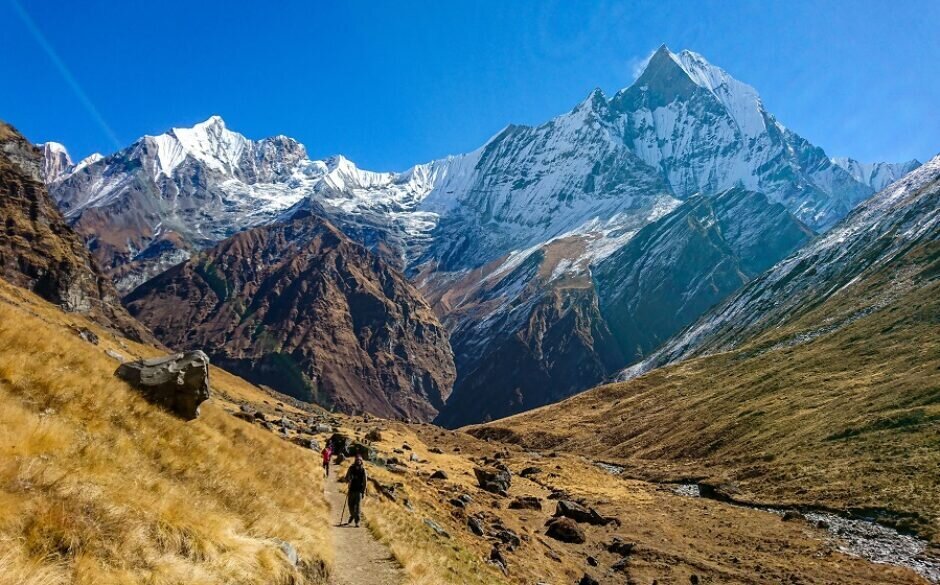
2. Adventure: The Annapurna Base Camp trek is a challenging adventure that offers a sense of accomplishment and personal growth. It requires physical endurance and mental strength to complete, but the stunning views and sense of accomplishment are worth the effort.
3. Cultural experience: The Annapurna region is home to several ethnic communities, each with its unique culture and traditions. The trek offers an opportunity to learn about their way of life, interact with the locals, and experience their warm hospitality.
4. Wildlife: The Annapurna region is a protected area that is home to several endangered species like the snow leopard, Himalayan black bear, and musk deer. The trek offers an opportunity to spot these rare animals in their natural habitat.
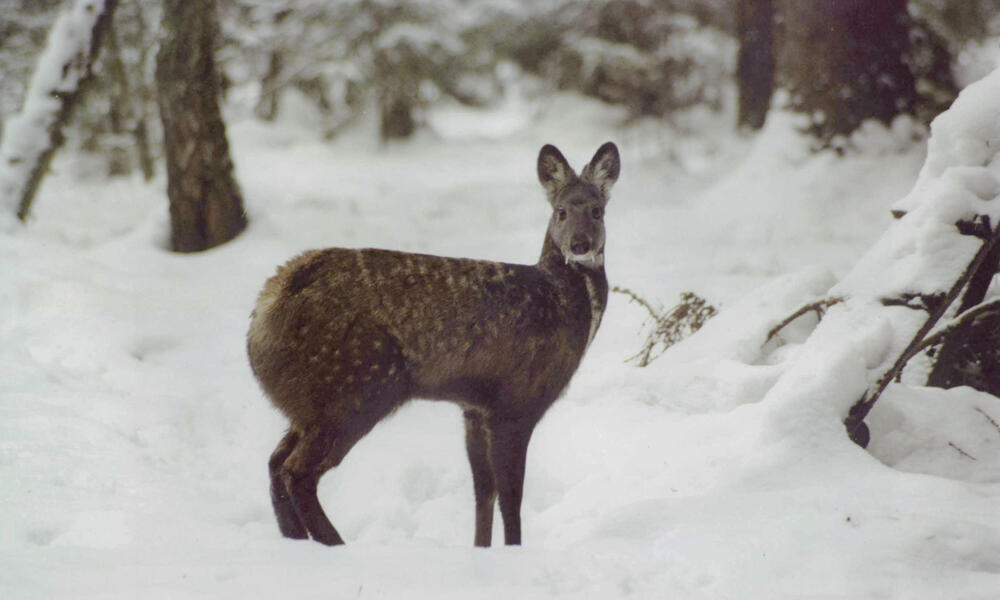
5. Sunrise and sunset views: The Annapurna Base Camp trek offers some of the most spectacular sunrise and sunset views, especially from Poon Hill and Annapurna Base Camp. The sun rising or setting over the snow-capped mountains is a sight that you will never forget.
6. Accommodation and facilities: Despite being a remote trek, the Annapurna Base Camp trek offers several comfortable and affordable accommodation options along the way. You can choose from tea houses, lodges, and guest houses that provide basic amenities like clean rooms, hot showers, and Wi-Fi.
7. Local cuisine: The Annapurna region has a unique cuisine that is a blend of Nepalese, Tibetan, and Indian flavors. During the trek, you can sample some of the delicious local dishes like dal bhat (rice and lentil soup), momos (dumplings), and thukpa (noodle soup).
8. Personal growth: Trekking to Annapurna Base Camp is a challenging adventure that requires mental and physical endurance. However, it’s also a rewarding and life-changing experience that can help you grow as a person, improve your fitness.
How to Reach Annapurna Base Camp Trek?
1. By Flight: The nearest airport to the Annapurna region is in Pokhara, which is about 200 kilometers from Kathmandu. Several domestic airlines operate daily flights between Kathmandu and Pokhara, which takes about 25 minutes. From Pokhara, trekkers can take a private jeep or public transportation to the starting point of the trek.
2. By Bus: There are regular buses and mini busses that operate between Kathmandu and Pokhara, which takes about 6-8 hours depending on the road conditions. From Pokhara, trekkers can take a private jeep or public transportation to the starting point of the trek.
3. By Private Car: Trekkers can also hire a private car or jeep from Kathmandu or Pokhara to the starting point of the trek. This option is more expensive but offers more comfort and flexibility.

What are the Challenges that I would Face in Annapurna Base Camp Trek?
The Annapurna Base Camp trek is a moderate to challenging trek that involves several days of walking in the mountains, and trekkers need to be prepared for the following challenges:
1. Altitude: Annapurna Base Camp is located at an altitude of 4,130 meters (13,550 feet) above sea level, which can cause altitude sickness in some trekkers. Trekkers need to acclimatize properly to avoid altitude sickness, which can be life-threatening.
2. Physical fitness: The trek involves several days of walking in the mountains, which can be physically demanding. Trekkers need to be in good physical shape to complete the trek comfortably. It’s recommended to start training and preparing for the trek at least a
few months in advance.
3. Weather: The weather in the Himalayas can be unpredictable, and trekkers need to be prepared for all kinds of weather conditions, including rain, snow, and cold temperatures. Trekkers need to bring appropriate clothing and gear to stay warm and dry during the trek.
4. Trail conditions: The trail to Annapurna Base Camp can be steep, rocky, and uneven, and trekkers need to be prepared for challenging terrain. Trekkers need to wear appropriate footwear and be cautious while walking on the trail.
5. Accommodation and facilities: Accommodation along the trekking route is basic, with shared rooms and communal toilets. There are no luxury facilities available, and trekkers need to be prepared for basic living conditions.
6. Altitude sickness: Altitude sickness is a common challenge faced by trekkers on the Annapurna Base Camp trek. Symptoms can include headache, nausea, dizziness, and fatigue. Trekkers need to be aware of the signs of altitude sickness and take appropriate measures to prevent it, such as drinking plenty of water, acclimatizing properly, and taking medication if necessary.
7. Navigation: The Annapurna Base Camp trek involves several days of walking in the mountains, and trekkers need to be able to navigate the trail. The trail can be confusing at times, and trekkers need to be
familiar with map reading and navigation techniques.
If you’re interested to know more about this trek, visit our page on the Annapurna Base Camp Trek, which includes comprehensive details on trail routes, highlights of Annapurna base camp trek, detailed itinerary, what to bring, recommended gear, and much more.
Annapurna Base Camp Trek Cost – A Comprehensive Guide
Nepal is a nation blessed with some of the most breathtaking natural scenery on earth. There is something here for everyone, from the Himalayan mountains’ snow-capped peaks to the verdant woods and valleys. One of the most well-liked trekking routes in Nepal is the Annapurna Base Camp Trek, and for good reason. The Annapurna range and the Machapuchare (Fishtail) peak are two of the most breathtaking natural features you will see on this walk.
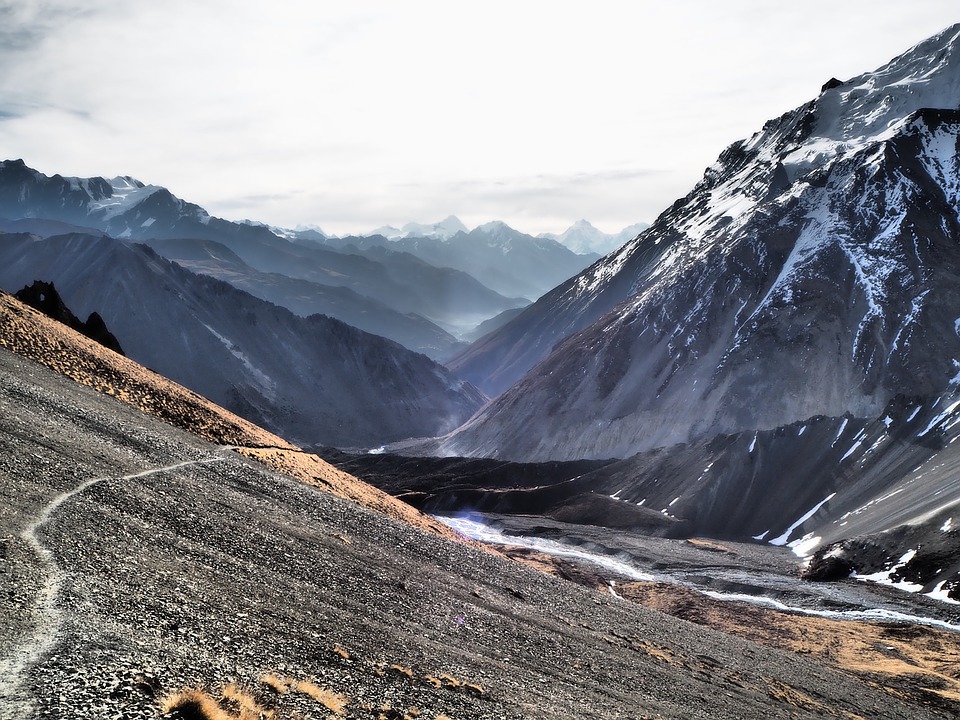
However, it’s crucial to comprehend the costs associated with this journey before starting out. The cost of the Annapurna Base Camp climb will be thoroughly examined in this article, taking into account everything from permits to lodging and meals.
Permits
The Annapurna Conservation Area Permit (ACAP) and the Trekkers’ Information Management System (TIMS) card are required for the Annapurna Base Camp trek. While the TIMS card costs NPR 1,000 (roughly USD 8.50), the ACAP costs NPR 3,000 (about USD 25) per person. You can purchase these licences from the Nepal Tourism Board in Pokhara or Kathmandu.
Transportation
It takes around an hour to drive from Pokhara to Nayapul, which is where the Annapurna Base Camp hike begins. You can either take a bus or a taxi to get there. A public bus will run you about NPR 150-200 (about USD 1.50-1.70) per person, whereas a cab will run you about NPR 2,500–3,000 (roughly USD 20–25).
Accommodation
From tea houses to lodges, there are many different places to stay along the Annapurna Base Camp hike. Tea houses are simple lodgings with a bed and a dining room for everyone to use. Lodges, on the other hand, provide greater amenities like private rooms and hot baths. The price of lodging is based on how comfortable you want to be. Tea houses often cost between NPR 300 and 500 (about USD 2.50 and 4.20) per night, whereas lodges typically cost between NPR 1,000 and 1,500 (about USD 8.50 and 12.70) per night.
Food and Water
Along the trek to Annapurna Base Camp, food and water are easily accessible. The majority of tea shops and inns serve food such dal bhat, a classic Nepalese dish, noodles, and soups. The price of a dinner is between NPR 300 and 500 (about USD 2.50 and 4.20). It’s vital to remember that the cost of transportation increases with elevation, making food more expensive.
Along the route, water is also easily accessible, but it’s important to avoid drinking from rivers and streams. It is advised to buy bottled water or to bring a water purifying device instead. Bottled water costs between NPR 80 and 150 (about $0.70 and $1.30) per litre.
Guide and Porter
Although hiring a guide or porter is not required for the Annapurna Base Camp trek, it is strongly advised, especially if you are a novice hiker. A porter can carry your luggage so you can concentrate on the journey, while a guide will help you traverse the trail and provide you insightful information about the region’s culture and history. A guide costs between NPR 2,000 and 3,500 (about $17 to $30) per day, whereas a porter costs between NPR 1,500 and 2,500 (around $12.70 to $22.20) per day. It’s vital to remember that these expenses also cover their lodging and meals.
Miscellaneous Expenses
When making preparations for the trek to Annapurna Base Camp, there are a few extra costs to take into account. These consist of:
Travel Insurance: Having travel insurance that includes trekking activities is strongly advised. Depending on the provider and coverage you choose, travel insurance prices can change.
Trekking Gears: You’ll need to rent or buy your trekking equipment if you don’t already have any. Items like sleeping bags, coats and trekking poles fall under this category. Depending on the type of equipment you hire and how long you keep it, different equipment costs apply.
Tips: At the end of the trek, it is usual to tip your guide and porter. You decide how much to tip, but it’s often around 10% of the total charge.
What is the total distance covered in the Annapurna Base Camp Trek?
The round-trip distance of the Annapurna Base Camp Trek is roughly 110 kilometres (68 miles). Before arriving at the final objective of Annapurna Base Camp, the walk leaves from Nayapul and passes via a number of towns and villages, including Ghorepani, Tadapani, Chhomrong, and Machhapuchhre Base Camp. The walk passes through a diverse terrain of lush woods, terraced farmland, and high-altitude glaciers and gives breathtaking views of the Annapurna mountain range. Despite the formidable overall distance, the walk is definitely worth it because it offers a singular and spectacular view of the Himalayan region.
Do I need a permit to trek to Annapurna Base Camp?
A permit is necessary to hike to Annapurna Base Camp, yes. Before beginning the journey, you must acquire the Trekkers’ Information Management System (TIMS) card and the Annapurna Conservation Area Permit (ACAP).
Is it possible to rent trekking gear in Nepal?
Yes, you can rent trekking equipment in Nepal. Rental stores that provide a variety of trekking equipment, such as jackets, sleeping bags, and trekking poles, can be found in Kathmandu or Pokhara.
How much cash should I bring with me on the trek to Annapurna Base Camp?
Your preferred level of comfort and the length of your walk will determine how much money you should carry for the Annapurna Base Camp walk. Budget between USD 500 to $1,500 per person on average for permits, lodging, meals, and transportation.
If you’re interested to know more about this trek, visit our page on the Annapurna Base Camp Trek, which includes comprehensive details on trail routes, highlights of Annapurna base camp trek, detailed itinerary, what to bring, recommended gear, and much more.
Annapurna Base Camp Trek Distance
One of the most well-known and magnificent trekking routes in Nepal is the Annapurna Base Camp trek. The walk allows trekkers the chance to experience the magnificence of the Annapurna mountain range, which includes peaks like Annapurna South, Annapurna I, Hiunchuli, and Machhapuchhre. The trek is located in the Annapurna Conservation Area. In order to fully experience the local culture and way of life, the trip also passes through traditional Gurung and Magar communities.

The Annapurna Base Camp hike provides a chance for cultural engagement in addition to the natural splendour and varied scenery. Trekkers can engage with locals, sample regional cuisine, and learn about local customs. The trek offers the opportunity to learn about the Gurung and Magar cultures as well as see traditional dance and music performances. Any adventure seeker will have an unforgettable experience on the trek because it is the ideal blend of natural beauty and cultural immersion.
Known for its stunning vistas of the Annapurna mountain range and its varied environments, from lush forests to snow-capped peaks, the Annapurna Base Camp trek is a well-known and difficult trekking route in Nepal. How far is the walk to Annapurna Base Camp? is one of the most often asked questions by trekkers preparing for this journey.

Depending on the beginning site and the trekker’s itinerary, the Annapurna Base Camp trek’s overall length varies. However, the average length of the journey is about 115 kilometres, or 71.5 miles. The entire walk, from the starting point in Nayapul to Annapurna Base Camp and back, is covered by this distance. Depending on pace and acclimatization, the journey typically lasts 7 to 12 days.
The journey is broken up over multiple days of hiking, with the length of each day fluctuating according to the terrain and altitude gain. Typically, the first day of the walk is an 8-kilometer journey from Nayapul to Tikhedhunga. The distance on the second day is roughly 12 kilometres, including a challenging ascent of more than 3,000 stairs to get to Ulleri. The third day involves a stunning sunrise climb to Poon Hill and travels roughly 10 kilometres from Ghorepani to Tadapani.
On the fourth day of the trek, the distance from Tadapani to Chhomrong is roughly 12 kilometres, including a steep ascent and descent of 2,000 stairs. On the fifth day, the distance from Chhomrong to Dovan is around 10 kilometres, including a difficult fall to cross a river and a rise to get there. The distance from Dovan to Machhapuchhre Base Camp, or MBC, on the sixth day is roughly 12 kilometres. A total of 14 kilometres are covered on the final day of the journey between MBC and Annapurna Base Camp and returning to MBC.
Despite its length, the trip to Annapurna Base Camp is manageable with the right planning and acclimatisztion. A certain amount of physical condition is required for Himalayan trekking, and altitude sickness can be prevented by allowing ample time for acclimatization. Trekkers should also have the necessary supplies, such as warm clothing, a sleeping bag, and decent hiking shoes.
The hike to Annapurna Base Camp trek is not just about the distance travelled; it’s also about the journey itself and the sights and experiences encountered. Views of the Annapurna range, which include peaks like Annapurna South, Annapurna I, Hiunchuli, and Machhapuchhre, also known as Fishtail, are breathtaking during the trip.
Trekkers travel through traditional Gurung and Magar villages along the journey, where they can observe the indigenous way of life and culture. Along with lush rhododendron and bamboo forests, the trek also passes through high-altitude deserts and barren landscapes.
Reaching the actual Annapurna Base Camp, which is located at a height of 4,130 metres (13,550 feet), is one of the trek’s highlights. Trekkers may experience the sunrise and sunset over the mountains while viewing the camp’s expansive vistas of the Annapurna massif, which is a very mesmerising sight.
The length of the Annapurna Base Camp trip is roughly 115 kilometres (71.5 miles), and it takes 7 to 12 days to accomplish. Trekkers will pass through a variety of landscapes and traditional communities on this difficult but rewarding journey, which offers breathtaking vistas of the Annapurna mountain range. Adequate planning is required for the trek, including physical fitness, the right equipment, and acclimatisation breaks. To get the most out of the trip, it’s also essential to pick the proper time of year and a reliable trekking company or guide.
Best Time To Visit Annapurna Base Camp Trek
One of the most well-liked trekking routes in Nepal is the trek to Annapurna Base Camp. This journey, which is located in Nepal’s Annapurna region, brings you through majestic mountains, tranquil landscapes, and a variety of cultural traditions. The trek is the ideal fusion of natural beauty and action. For the finest experience, it is crucial to pick the correct time to go on this walk. We’ll talk about the ideal time to hike to Annapurna Base Camp in this article.
There are four seasons in the Annapurna region: spring, summer, autumn, and winter. Every season has its own distinct characteristics and experiences. Let’s examine each season to determine when this voyage is most appropriate.

Spring (March-May)
The Annapurna Base Camp Trek is most frequently undertaken in the spring. Trekking is made possible by the excellent weather and comfortable daytime temperatures of 15-20°C. The mountains are magnificently visible, and the skies are clear. Rhododendron woods blossom, illuminating the surroundings in vivid pink, crimson, and white hues. Since the trails are dry, trekking is made simpler. The only drawback to this time of year is that it is the busiest and the trails may become congested.
Summer (June-August)
In Nepal, the monsoon season is in the summer. During the day, the temperature is between 20 and 25 degrees Celsius, and it can be humid. Leeches and landslides are very likely due to the damp conditions of the trails. The scenery is lush and green, though, and after a shower, the mountain views are stunning. During this time, there are fewer people on the trails and you can save money on lodging and meals. This season is ideal for you if getting muddy and damp is not a problem.
Autumn (September-November)
Another popular time to hike to Annapurna Base Camp is in the autumn. The temperature is comfortable and varies between 15-20°C during the day. The mountains are magnificently visible, and the skies are clear. Landscapes take on hues of yellow, orange, and red as the vegetation begins to change colors. Since the trails are dry, trekking is made simpler. The only drawback to this time of year is that it is also the busiest, which means that the trails may become congested.
Winter (December-February)
The least favored time of year to trek to Annapurna Base Camp is winter. During the day, the temperature falls between -10°C and 5°C, which is extremely low. The mountains are magnificently visible, and the skies are clear. The trails are dry, and there aren’t many people around. However, snow can cover the higher elevations, making trekking difficult. To complete this walk during the winter, sufficient supplies and equipment are required. This time of year is ideal if you are an experienced trekker who wants to escape the crowds.
The Annapurna Base Camp Trek is best done in the spring (March to May) and autumn (September to November). Both of the seasons provide pleasant weather, clear skies, and breathtaking mountain views. Since the trails are dry, trekking is made simpler. However, summer (June-August) can also be a good option if you don’t mind getting muddy and wet. The least crowded season is winter (December to February), which can be ideal for seasoned hikers who want to avoid the masses.
Tags: annapurnabasecamptrek


